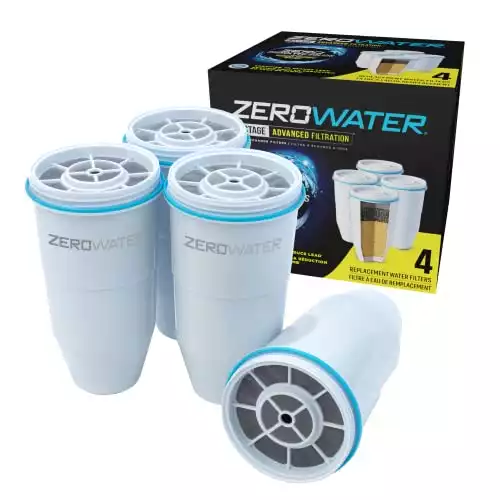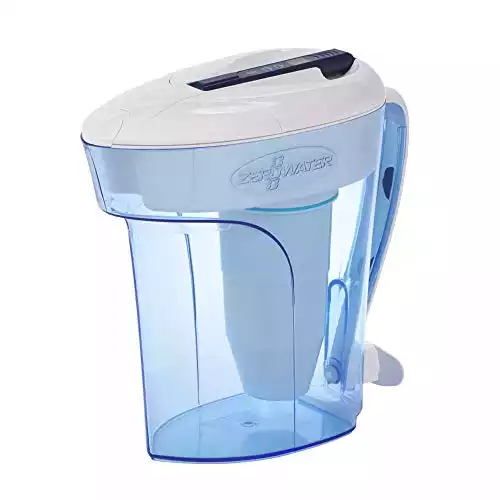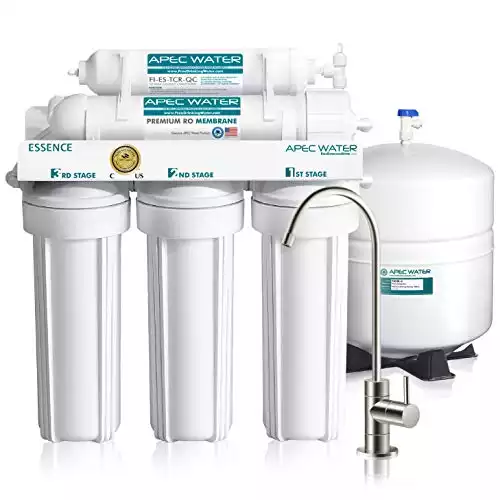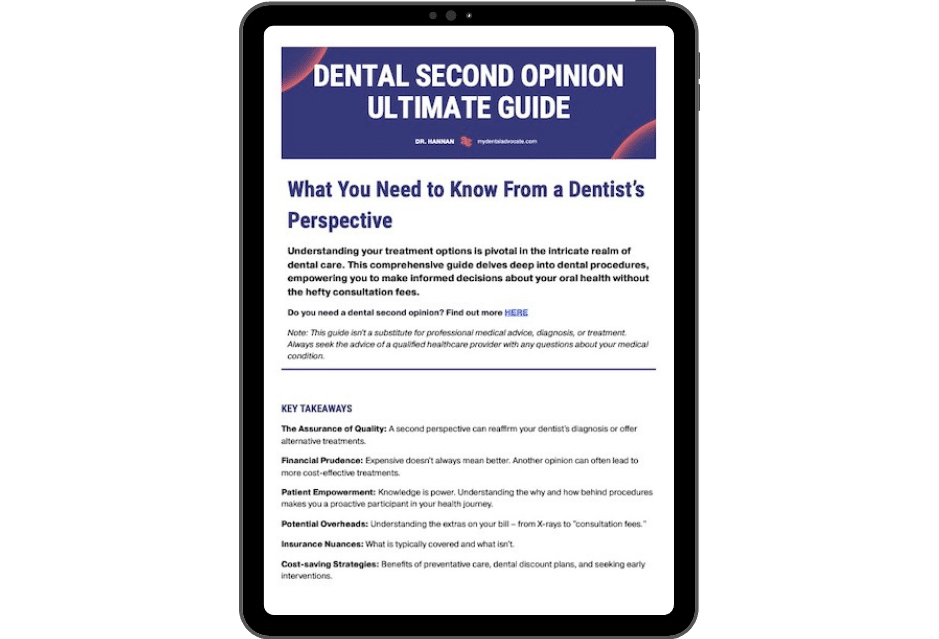Does Filtering Water Remove Fluoride? (2024 Update)
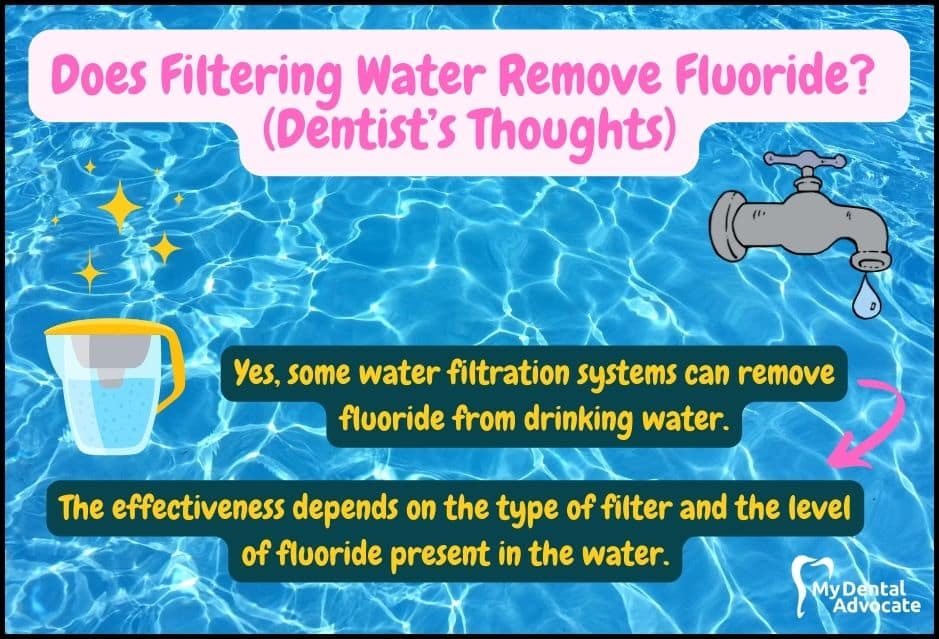
Fluoride is a mineral added to drinking water for decades to improve dental health.
However, only some enjoy fluoride in their drinking water, and many wonder if filtering their water can remove this mineral.
This blog post will explore the science behind fluoride removal from water and the best methods for ensuring your drinking water is free of this mineral from a dentist’s perspective.
Recommended Reading: Dental Fluoride | The Ultimate GuideNeed Dental Advice? Ask Dr. Hannan!
Does Filtering Water Remove Fluoride?
Yes, some water filtration systems can remove fluoride from drinking water. However, the effectiveness of a water filter in removing fluoride depends on the type of filter and the level of fluoride present in the water.
According to the American Dental Association (ADA), fluoridated community water systems serve almost 75 percent of the U.S. population as of 2012.
Understanding Fluoride in Drinking Water
Fluoride is a mineral that has been added to public drinking water for over 70 years to improve oral health.
The goal of water fluoridation is to reduce the occurrence of tooth decay and promote overall oral hygiene.
As a dentist, I have seen firsthand the benefits of fluoride in preventing cavities in my patients. This is why I support the fluoridation of community water supplies, as it is a cost-effective public health measure.
In the U.S., the average annual cost of fluoridating the water supply ranges from $0.50 per person in large communities to $3.00 per person in smaller communities. These small costs can lead to significant benefits in terms of oral health for communities.
Fluoride is the 13th most abundant element in the world and can be found in various environmental forms, including air, soil, rocks, and water.
What is Fluoride and How Does it Get into Our Drinking Water?
- Fluoride is a mineral found in rocks and soil.
- Fluoride can enter drinking water supplies from natural sources or from water treatment facilities’ addition of fluoride compounds.
- Fluoride is added to drinking water to maintain the recommended level of 0.7-1.2 mg/L, which is considered optimal for oral health.
- The Environmental Protection Agency (EPA) regulates the amount of fluoride in drinking water, ensuring that it is within safe levels for consumption.
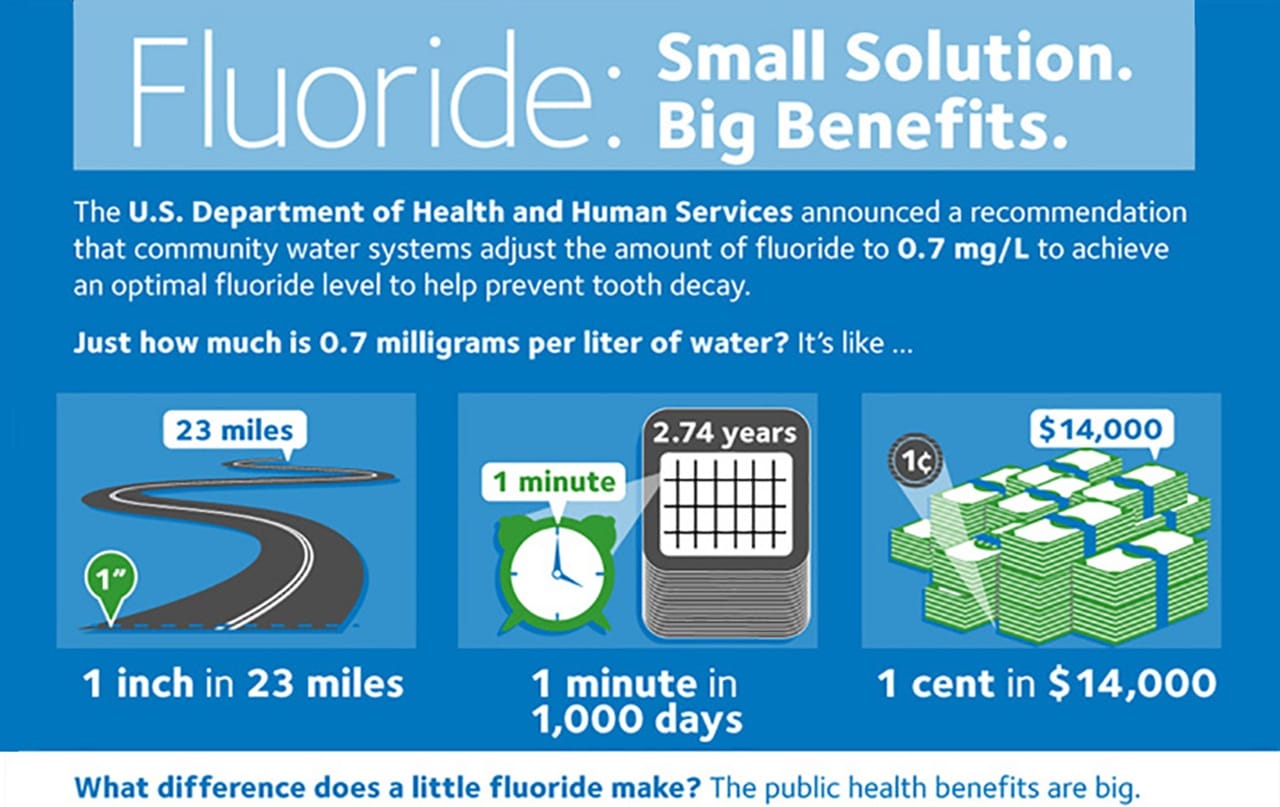
Importance of Fluoride in Dental Health
Fluoride is an essential mineral for maintaining strong, healthy teeth and gums. It works by strengthening tooth enamel and reducing the formation of cavities.
Fluoride also helps to reverse early signs of tooth decay and can reduce the risk of gum disease.
Let’s explore the role of fluoride in promoting dental health and how it can help to prevent tooth decay and gum disease.
Fluoride was introduced as a preventative measure for dental caries in 1945 in Grand Rapids, Michigan.
Role of Fluoride in Preventing Tooth Decay and Gum Disease
- Tooth Decay and Fluoride: Decay happens when plaque bacteria produce acid that erodes tooth enamel. Fluoride strengthens enamel, making it more resistant to this erosion.
- Remineralization: Fluoride replenishes minerals lost to tooth decay, aiding in tooth remineralization.
- Plaque Reduction: It helps decrease plaque formation, the bacterial film on teeth that can lead to gum disease.
- Regular Fluoride Exposure: Consistent fluoride use, either in drinking water or as a topical application, reduces the risk of tooth decay and gum disease, enhancing oral health.
Pros & Cons of Fluoride in Drinking Water
The addition of fluoride to public drinking water has been controversial for many years.
On the one hand, fluoride has been proven to improve oral health by preventing tooth decay and reducing the risk of gum disease.
On the other hand, some individuals are concerned about the potential health risks associated with fluoride consumption. In this section, we’ll examine the pros and cons of fluoride in drinking water to help you decide on its use.
Pros
- Enhanced Oral Health: Fluoride strengthens tooth enamel, reduces cavity formation, and can reverse early tooth decay, leading to better oral health and lower gum disease risk.
- Cost-Effective: Fluoridating public drinking water is an economical method to enhance oral health for a broad population.
- Convenience: With fluoride in public drinking water, there’s no need for additional fluoride sources like supplements or topical treatments, making it a convenient option.
Cons
- Health Risk Concerns: There are worries about potential health risks from fluoride consumption, like increased chances of bone fractures or nervous system issues.
- Risk of Overdose: Excessive fluoride intake can lead to dental fluorosis, causing tooth discoloration and mottling, though this is rare.
- Ethical Considerations: The addition of fluoride to public drinking water without individual consent raises ethical concerns for some, as they view it as an infringement on personal choice.
A report from the U.S. Surgeon General in 2000 estimated that 51 million school hours are lost yearly because of dental-related illness. Without water fluoridation, that number is much higher.
Science Behind Fluoride Removal from Water
Fluoride removal from drinking water is a process that can be accomplished through various methods. Below is a detailed explanation of the science behind fluoride removal, including the techniques used and the factors affecting their efficacy.
Key Factors
- Ion Exchange Resins: This technology removes fluoride from tap water. Water passes through resin beads charged with positive ions, which exchange with fluoride ions, thus removing fluoride. ZeroWater filters use this method.
- Reverse Osmosis: This process forces water through a semi-permeable membrane, filtering out contaminants including fluoride, by allowing only water molecules to pass through.
- Activated Alumina: As an absorbent material, activated alumina filters out fluoride from drinking water. Water flows over activated alumina, which adsorbs fluoride ions, effectively removing them.
The effectiveness of these methods can be affected by various factors, including the type and quality of the filtration system, the initial fluoride concentration in the water, and the pH level of the water.
Recommended Reading: The Truth About Fluoride and Teeth Whitening (Dentist’s Perspective)Therefore, it is essential to consult a professional or conduct thorough research to determine the best method of fluoride removal for your specific needs and circumstances.
Water Filters & Their Effectiveness in Removing Fluoride
There are a variety of water filters available on the market today, each with its strengths and limitations when it comes to removing fluoride from drinking water.
Types of Water Filters
- Pitcher-Style Filters: These are easy to use and affordable, but their ability to remove fluoride is limited. They typically use activated carbon, which reduces chlorine and other contaminants. ZeroWater uses a 5-stage system to filter fluoride.
- Reverse Osmosis Systems: Highly effective at removing fluoride and various other contaminants from drinking water. They can be costly and need a substantial amount of water to function.
- Distillation Systems: These systems boil water and capture the steam, removing fluoride and many other contaminants. However, they can be expensive and require a lot of energy to operate.
The U.S. Centers for Disease Control and Prevention (CDC) has cited community water fluoridation as one of 10 outstanding public health achievements of the 20th century.
Are there any Concerns with Removing Fluoride from Drinking water?
Some of the potential concerns with removing fluoride from drinking water include are listed below.
Potential Concerns
- Reduced Oral Health: Eliminating fluoride from drinking water can heighten the risk of tooth decay and gum disease, especially in children who require fluoride for developing strong, healthy teeth.
- Inadequate Fluoride Exposure: In regions with naturally low fluoride levels in water, further removal can lead to insufficient fluoride exposure, essential for maintaining good oral health.
- Inconsistent Fluoride Exposure: Removing fluoride from drinking water can lead to uneven fluoride exposure, as some people might still get fluoride from toothpaste, mouthwash, or dietary supplements.
Best Water Filters for Removing Fluoride & Other Contaminants
ZeroWater filters are the only pour-through filters NSF Certified to remove chromium & lead. Their pitchers, tumblers, & dispensers remove virtually all solids for the purest tasting water.
Premium long-lasting filters remove up to 99% of contaminants such as chlorine, taste, odor, VOCs, as well as toxic fluoride, arsenic, lead, nitrates, heavy metals and 1000+ contaminants. Max Total Dissolved Solids - 2000 ppm.
America's No.1 rated water filter brand with 20 years of success guaranteeing trouble free, noise-free system for long-lasting, dependable, pure drinking water. 2-year extended manufacturer warranty is available upon registration
Tips for Maintaining Your Water Filter to Ensure Effective Fluoride Removal
It is vital to maintain your water filter to ensure that your water filter continues to remove fluoride and other contaminants from your drinking water. Here are some tips for keeping your water filter to ensure effective fluoride removal.
Recommendations
- Regular Filter Cartridge Replacement: To effectively remove fluoride and other contaminants, it’s crucial to regularly replace the cartridges in your water filter. Adhere to the manufacturer’s guidelines on replacement frequency to ensure your filter’s efficiency.
- Cleaning Your Water Filter: Regular cleaning is key to maintaining your filter’s performance. This may include cleaning the cartridges and the filter’s exterior, depending on the filter type.
- Monitoring Water Quality: Regular checks on your drinking water quality can confirm if your filter effectively removes fluoride and other contaminants. Use a water test kit or professional lab testing for accurate results.
By correctly maintaining your water filter and following these tips, you can ensure that it effectively removes fluoride and other contaminants from your drinking water, helping protect your health and well-being.
Fluoride Research Statistics
- Currently, around 370 million people in 27 countries consume fluoridated water.
- Fifty million consume naturally occurring fluoride.
- Fluoride was introduced as a preventative measure for dental caries in 1945 in Grand Rapids.
- Studies prove water fluoridation continues to be effective in reducing dental decay by at least 25% in children and adults.
- The average cost per year for U.S. communities to fluoridate the water ranges from $.50 per person for large communities to $3.00 per person for small communities.
Fluoride Resources
- Video: Fluoride: The Superhero of Cavity Fighting
- For the Dental Patient: Facts About Bottled Water (2003)
- Fact Sheet on Questions About Bottled Water and Fluoride
- Recommendations for Using Fluoride to Prevent and Control Dental Caries in the United States
Frequently Asked Questions (FAQ)
Does boiling tap water remove fluoride?
Boiling tap water does not remove fluoride. Fluoride is a mineral that is not readily eliminated through boiling or evaporation, so the concentration of fluoride remains constant in boiled water. To remove fluoride from drinking water, it is necessary to use a water filter specifically designed to remove fluoride.
Does distilled water remove fluoride?
Distilled water is a type of purified water that is created by boiling water and then collecting the condensation, which leaves behind most impurities including minerals, salts, and chemicals. Fluoride is one of the minerals that can be removed from water through distillation, so distilled water generally does not contain fluoride.
Can Fridge Filters Remove Fluoride?
Yes, some refrigerator filters are capable of removing fluoride from drinking water. It is important to choose a filter that specifically states it removes fluoride and to regularly replace the filter cartridge to maintain its effectiveness.
My Experience & Expertise
As a practicing dentist, I have extensive experience using fluoride in my work.
Fluoride is a powerful tool in preventing tooth decay and treating dental issues, and I have seen its effectiveness firsthand in my patients.
In my experience, fluoride is an integral part of a comprehensive approach to oral health and hygiene, and it plays a critical role in preventing and treating dental problems.
Need a second opinion? We can help! Learn more. Knowledge is power when cultivating healthy dental habits. The more informed you are, the better positioned you’ll be to prevent avoidable and potentially costly dental procedures for you and your family. Watch for future blog posts, where we’ll continue sharing important information, product reviews and practical advice!
Sources
- American Dental Association (Fluoride article)
- Peckham S, Awofeso N. Water fluoridation: a critical review of the physiological effects of ingested fluoride as a public health intervention. ScientificWorldJournal. 2014 Feb.
- Harding MA, O’Mullane DM. Water fluoridation and oral health. Acta Med Acad. 2013 Nov.

About the Author
Dr. Matthew Hannan, also known as “Dr. Advocate,” is a board-certified dentist on a mission to provide accurate dental patient education. He attended Baylor University before completing dental school at UT Health San Antonio School of Dentistry. He now lives in Arizona with his beautiful wife and 4 kids. Dr. Hannan believes everyone should access easy-to-read dental resources with relevant, up-to-date dental research and insight to improve their oral health.

Connect with Dr. Hannan!

Sonicare Electric Toothbrush Buying Guide
As a dentist, I know the power of a great toothbrush in maintaining oral health. This guide is your one-stop resource for choosing the perfect Philips Sonicare electric toothbrush.

Overcoming Dental Fears & Phobias
Many people experience anxiety at the thought of visiting the dentist. From the sound of the drill to the anticipation of pain, dental fears and phobias are common, yet they can prevent individuals from seeking necessary care. This article delves into the roots of dental anxieties, providing insight and practical strategies for overcoming them.
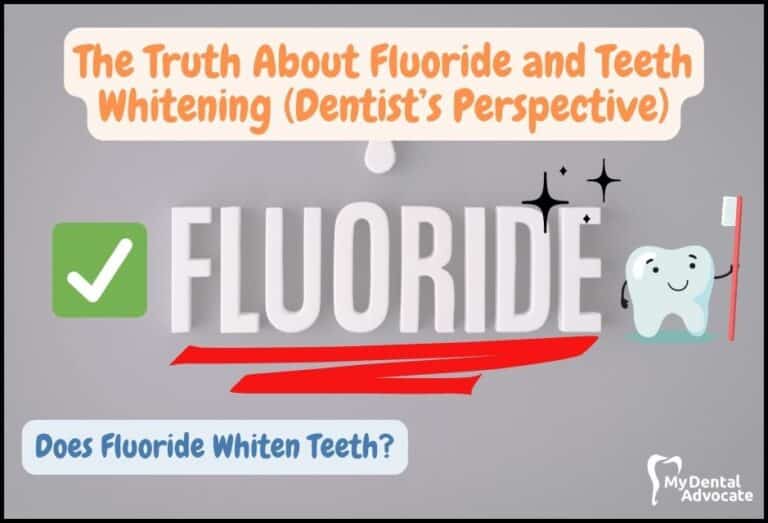
The Truth About Fluoride and Teeth Whitening (Dentist’s Perspective)
As a dentist, I often get asked if fluoride can whiten teeth. Unfortunately, the short answer is no; fluoride cannot directly whiten teeth. However, it does have many benefits for oral health…
Gain Clarity with Our FREE Second Opinion Guide
Receive clear, expert second opinions online within 48 hours. Start today!
Product Reviews
Our 250+ dental product reviews (and counting), curated by an experienced dentist, are the most comprehensive online.
Toothbrush Genie
State-of-the-art chatbot designed to help you discover your perfect toothbrush in just a few simple steps!
Cavity Risk Assessment
Cutting-edge digital tool designed to evaluate your individual cavity risk based on your responses to a series of questions.
Gum Disease Assessment
Discover your gum disease risk with our quick and engaging 6-question assessment!


